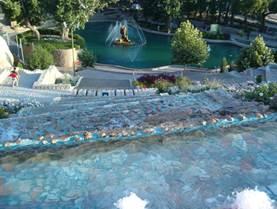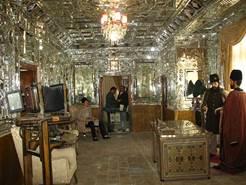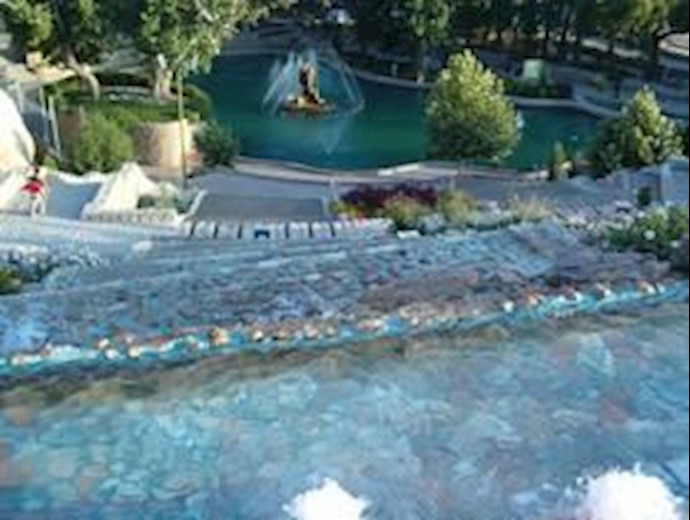North Khorasan province is one of the most diverse territories in Iran today, largely reflecting the ethnic makeup of Iran. Kurdish speakers make up 46.1%, forming the relative majority (Plurality) of the population.

Kurmanji women making bread
The next largest group is Persian speakers which make up 27.8% of the population, Khorasani Turks makeup 20.6% and Turkmens make up about 3.3% and other Iranians make up 2.2% of the population. There used to be a sizeable population of Lurs who were exiled to this province; however, most returned to their native area in western Iran as there are no signs of them in the province today.


Beshqardash Spring
Historical sites
Tepe Pahlavan is a prehistoric site near Jajarm city. Archaeological fieldworks in this site showed the richness of prehistoric culture in the region.

petroglyphic site of Jorbat (This area is locally known as Sang Neveshteh or the “inscribed stone”) to the north of the plain of Jajarm is one of the largest rock-art complexes of Iran. Ranging from late Bronze Age to the ethnographic period, the rock art imagery of Jorbat has close parallels both in petroglyphic sites of the Central plateau of Iran and the Central Asian steppes.
Baba Aman spring
Main sights
This province contains many historical and natural attractions, such as mineral water springs, small lakes, recreational areas, caves and protected regions, and various hiking areas. Most of the historical relics are from the Qajar era, as earthquakes continue to ravage older relics.
The Cultural Heritage Organization of Iran lists 1,179 sites of historical and cultural significance in all three provinces of Khorasan.
Some of the popular attractions of North Khorasan are:
Tepe Pahlavan; Jalalal-din castle, Jajarm; Miandasht wildlife refuge (living place of Asiatic Cheetah); petroglyphic site from Bronze Age in Jorbat (10 km north of Jajarm); Sari Gol protected area; Hasanabad, Ghaisar and Solak old castles’ Noshirvan and Ebadatgah caves; Faghatdezh castle;Tomb of Sheikh Ali Esfarayeni; Saloog Protected Area; Besh Qardash (five brothers) and Baba-Aman springs; Bidag, Konegarm, Konjekooh, Armadloo and Seyed Sadegh caves; Mofakham mirror house ( built during the Qajar era); Baba Tavakol mausoleum; Imamzadeh Sultan Seyed Abbas; Salook Protected Area; Bazkhaneh valley;Ayyub mineral water spring; Ruwin village.
Bojnord
Bojnord (also spelled Bojnūrd, Bujnūrd, Bojnoord, or Bujnourd) is the capital city of North Khorasan province, Iran. It is about 701 km (436 mi) fromTehran.


Mofakham’s Mirror House Mirror House turned into a museum
The ancient city was situated on a hill northwest of the present city of Bojnurd called Sareban Mehalleh, also known as Sarvan Mahaleh by local people.
The city is quite famous for its multicultural background. Many people speak at least 2 different languages including Persian, Tati, Khorasani Turkic, Kurmanji Kurdish, and Turkmen. Intermarriage between said ethnic groups is common.

The city is famous for its Turkmen horses and professional horse training centers. People from all over the world often come over to visit these highlights.
Husseinieh Jajarmi turned into a handicraft sale centre








